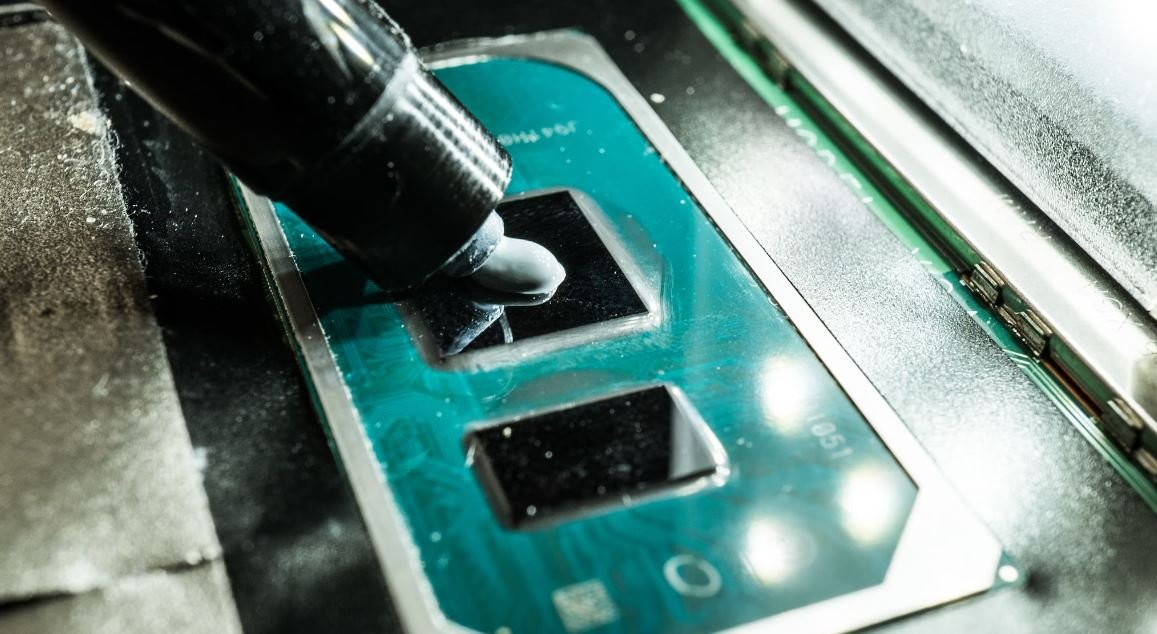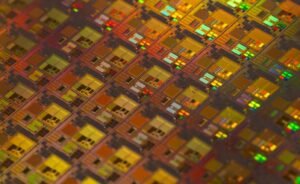How Close Are We to AI Robots?
Rapid advancements in technology have brought us closer than ever to the reality of AI robots. From autonomous vehicles to voice-controlled virtual assistants, the integration of artificial intelligence into our daily lives is becoming increasingly commonplace. But just how close are we to AI robots that can interact with us on a human-like level?
Key Takeaways:
- AI technology has made significant progress in recent years.
- Autonomous robots are being developed with advanced capabilities.
- Natural language processing is improving, enabling more lifelike interactions.
- Robotics and AI integration still face challenges before reaching full potential.
Artificial intelligence has made remarkable strides in recent years. *One of the main driving forces behind these advancements is machine learning, which allows AI systems to learn and improve from experience without being explicitly programmed.* Through machine learning algorithms, AI robots can analyze vast amounts of data, recognize patterns, and make informed decisions based on this analysis. This capability has led to significant breakthroughs across various industries, from healthcare to manufacturing.
The Progress of AI Robotics
AI robots themselves are becoming more sophisticated and capable. *They can now perform complex tasks such as object recognition, facial expression analysis, and even emotional understanding, enhancing their ability to interact with humans.* Companies like Boston Dynamics have developed autonomous robots that can navigate challenging terrains, perform acrobatic maneuvers, and even execute tasks in warehouses. These robots showcase the advancements in robotics and AI integration, bringing us closer to the vision of AI robots working alongside humans in various domains.
Challenges on the Path to AI Robots
While the progress in AI robotics is impressive, several challenges remain before AI robots become a common sight in our everyday lives. *One significant challenge is the natural language processing capability required for meaningful and lifelike conversations between humans and AI robots.* While AI chatbots are already able to engage in basic conversations, there is still work to be done to improve their contextual understanding, emotional intelligence, and ability to handle ambiguity. Additionally, the ethical implications of AI robots, such as privacy concerns and potential job displacement, need to be carefully addressed before widespread adoption.
The Future of AI Robots
The future of AI robots holds great promise. *As technology continues to advance and AI systems become more sophisticated, we can expect AI robots to become increasingly capable and integrated into various aspects of our lives.* Collaborative robots, or cobots, are already being used in manufacturing and healthcare to assist humans in repetitive tasks, increasing efficiency and productivity. The potential applications of AI robots are vast, ranging from personal assistants and companions to caregivers for the elderly. While full human-like AI robots might still be a few years away, the progress we have made undoubtedly brings us closer to realizing this vision.
| Field | Advancements |
|---|---|
| Healthcare | AI surgical systems are improving precision and minimizing errors. |
| Manufacturing | Collaborative robots are enhancing productivity and automating repetitive tasks. |
| Entertainment | AI-powered virtual assistants are revolutionizing the gaming industry. |
| Challenge | Implications |
|---|---|
| Natural Language Processing | Improving conversational abilities for more human-like interactions. |
| Ethical Concerns | Addressing privacy, job displacement, and bias issues associated with AI robots. |
| User Acceptance | Educating and familiarizing people with AI robots to gain trust and widespread adoption. |
| Domain | Potential Applications |
|---|---|
| Healthcare | Assisting medical professionals, providing companionship to patients. |
| Transportation | Autonomous vehicles, improved traffic management. |
| Personal Assistance | AI-powered virtual assistants, home automation. |
As AI technology continues to advance, the line between humans and AI robots will continue to blur. The journey towards AI robots may still have challenges ahead, but the progress made so far is undeniable. With each breakthrough, we get one step closer to a future where AI robots seamlessly integrate into our society, augmenting our capabilities and transforming various industries.

Common Misconceptions
1. AI robots are already indistinguishable from humans
One common misconception is that we are already at a stage where AI robots are indistinguishable from humans. However, while AI technology has advanced significantly in recent years, we are not yet at a point where robots can fully replicate human behavior and emotions.
- AI robots lack the ability to experience genuine emotions and have true consciousness.
- The robotic movements and facial expressions of AI robots still lack the natural fluidity that humans possess.
- AI robots may appear human-like superficially, but they cannot fully comprehend complex human interactions and nuances.
2. AI robots are a threat to humanity
Another common misconception is that AI robots pose an imminent threat to humanity, potentially leading to the downfall of civilization. While it is true that AI technology can have both positive and negative impacts, the idea of robots turning against humans like in science fiction movies is largely exaggerated.
- AI robots are programmed with certain limitations and ethical guidelines that prevent them from causing harm to humans.
- The focus of AI research and development is to enhance human life and solve complex problems, rather than replacing or harming humans.
- Misinterpretations and fear-based narratives surrounding AI robots have fueled this misconception, leading to unnecessary anxiety and skepticism.
3. AI robots can do all human jobs
Many people mistakenly believe that AI robots have the capability to perform all human jobs, thereby leading to widespread unemployment. While it is true that AI technology is automating certain tasks and job roles, there are still numerous roles that require human qualities and skills that robots cannot replicate.
- Creative and artistic professions, such as writers, artists, and musicians, rely on human creativity, imagination, and emotions.
- Jobs that require complex problem-solving, critical thinking, and adapting to new situations are difficult for AI robots to perform at the same level as humans.
- Interpersonal skills, empathy, and understanding human emotions are essential in various fields, including counseling, healthcare, and customer service.
4. AI robots will surpass human intelligence
There is a common misconception that AI robots will eventually surpass human intelligence, leading to a dystopian future where robots dominate society. While AI technology can process vast amounts of data and perform specific tasks more efficiently than humans, replicating human intelligence is a complex challenge that is not easily achievable.
- Human consciousness and self-awareness are aspects that are difficult to replicate in AI robots.
- The ability to think outside the box, make connections across different domains, and possess common sense is unique to human intelligence.
- While AI algorithms can learn and improve through extensive data analysis, they still lack the inherent creativity and intuition that humans possess.
5. AI robots are only a recent development
Some people believe that AI robots are only a recent development, rapidly emerging in the last few years. However, the concept of AI has been explored for several decades, with significant progress made in recent years thanks to advancements in computing power and machine learning algorithms.
- The foundation for AI research can be traced back to the 1950s, with key contributions from pioneers like Alan Turing.
- The development of sophisticated AI systems, such as IBM’s Deep Blue defeating chess champion Garry Kasparov in 1997, marked important milestones in the field.
- The integration of AI technology into consumer products, such as voice assistants and self-driving cars, has popularized the notion of AI robots, but their development has been an ongoing process for many years.

Robots in Everyday Life
In the past decade, robots have become increasingly integrated into our daily lives, performing a wide range of tasks for us. Here’s a glimpse into how AI robots are being used in various fields.
Robots in Healthcare
AI robots are revolutionizing the healthcare industry, assisting in surgeries, providing companionship for the elderly, and even diagnosing diseases. Take a look at some notable examples:
| Robot Name | Function | Noteworthy Achievement |
|---|---|---|
| Da Vinci Surgical System | Assisted robotic surgery | Performed over 7 million surgeries worldwide |
| Paro | Robotic seal | Used to soothe patients with dementia and Alzheimer’s |
| Watson for Oncology | Assisted oncology diagnosis and treatment | Provided treatment recommendations for over 9,000 patients |
Robots in Transportation
Self-driving cars and autonomous drones are becoming increasingly prevalent, transforming the way we move people and goods. Here are some key players in the field:
| Robot Name | Function | Noteworthy Achievement |
|---|---|---|
| Tesla Autopilot | Semi-autonomous driving | Over 2 billion miles driven with Autopilot engaged |
| Amazon Prime Air | Delivery drones | Successfully delivered packages in under 30 minutes |
| Waymo | Fully autonomous cars | Logged over 20 million miles on public roads |
Robots in Education
Education is another field where AI robots are making a significant impact. These robots assist teachers and students in various ways:
| Robot Name | Function | Noteworthy Achievement |
|---|---|---|
| Nao | Educational companion | Used to teach coding and other subjects in classrooms worldwide |
| Primo | Programming learning tool | Introduces children to coding concepts through play |
| Sphero | STEM education | Engages students in coding and robotics activities |
Robots in Entertainment
AI robots are also finding their way into the entertainment industry, creating new possibilities for fun and engaging experiences. Here are a few examples:
| Robot Name | Function | Noteworthy Achievement |
|---|---|---|
| ASIMO | Humanoid robot | Performed at various international events and shows |
| Aibo | Robotic dog | Brings companionship and joy to families worldwide |
| RoboCup | Soccer-playing robots | Hosts an annual robot soccer competition with international teams |
The Future of AI Robots
The rapid advancements in AI robotics are bringing us closer than ever to a world where robots are seamlessly integrated into every aspect of our lives. These machines are augmenting human capabilities, revolutionizing industries, and improving the overall quality of life. As technology continues to advance, the possibilities for AI robots are boundless.
How Close Are We to AI Robots? – Frequently Asked Questions
1. What is the current state of AI robot development?
At present, AI robot development is advancing rapidly. Although fully autonomous humanoid robots like those portrayed in science fiction movies are not yet a reality, significant progress has been made in developing intelligent robots capable of performing various tasks.
2. How do AI robots learn and adapt?
AI robots learn through a combination of machine learning algorithms and neural networks. These algorithms allow the robots to analyze and interpret data from their environment, enabling them to adapt and improve their performance over time.
3. Can AI robots think and make decisions like humans?
While AI robots are becoming increasingly capable of making autonomous decisions, they do not possess the same level of consciousness or reasoning as humans. AI robots make decisions based on programmed algorithms and predefined parameters rather than true human-like thinking.
4. Are there any AI robots that can pass the Turing test?
Currently, no AI robots have successfully passed the Turing test, which is a measure of a machine’s ability to exhibit intelligent behavior similar to that of a human. However, ongoing research and advancements in AI may bring us closer to achieving this milestone in the future.
5. What are the limitations of current AI robots?
Current AI robots have limitations in their ability to understand context, handle complex emotions, and autonomously navigate unstructured environments. They often require specific programming and training to perform tasks efficiently and effectively.
6. How long do experts predict it will take to achieve AI robots like those in movies?
Predictions vary among experts, but many believe that fully autonomous AI robots with human-like capabilities as depicted in movies may still be many years away. The development of general artificial intelligence poses significant challenges that need to be overcome before such robots become a reality.
7. What are the potential benefits of AI robots?
AI robots have the potential to enhance various industries, including healthcare, manufacturing, and transportation. They can assist in tasks that are dangerous, repetitive, or require high precision, ultimately improving efficiency and reducing human error.
8. Are there ethical concerns surrounding AI robots?
Yes, as AI robots become more advanced, ethical concerns arise. These include issues such as privacy, job displacement, and the potential for AI robots to be used in malicious ways. It is crucial for society to address these concerns and develop regulations to ensure responsible AI use.
9. Can AI robots replace human labor entirely?
While AI robots are capable of automation and can perform tasks more efficiently than humans in certain areas, complete replacement of human labor is unlikely in the near future. AI robots are designed to work in collaboration with humans, augmenting their abilities rather than replacing them altogether.
10. What advancements can we expect in the near future regarding AI robots?
In the near future, we can expect advancements in AI robot technology that enable better understanding and interaction with the environment, improved natural language processing, enhanced decision-making capabilities, and continued progress in areas such as computer vision and robotics.




